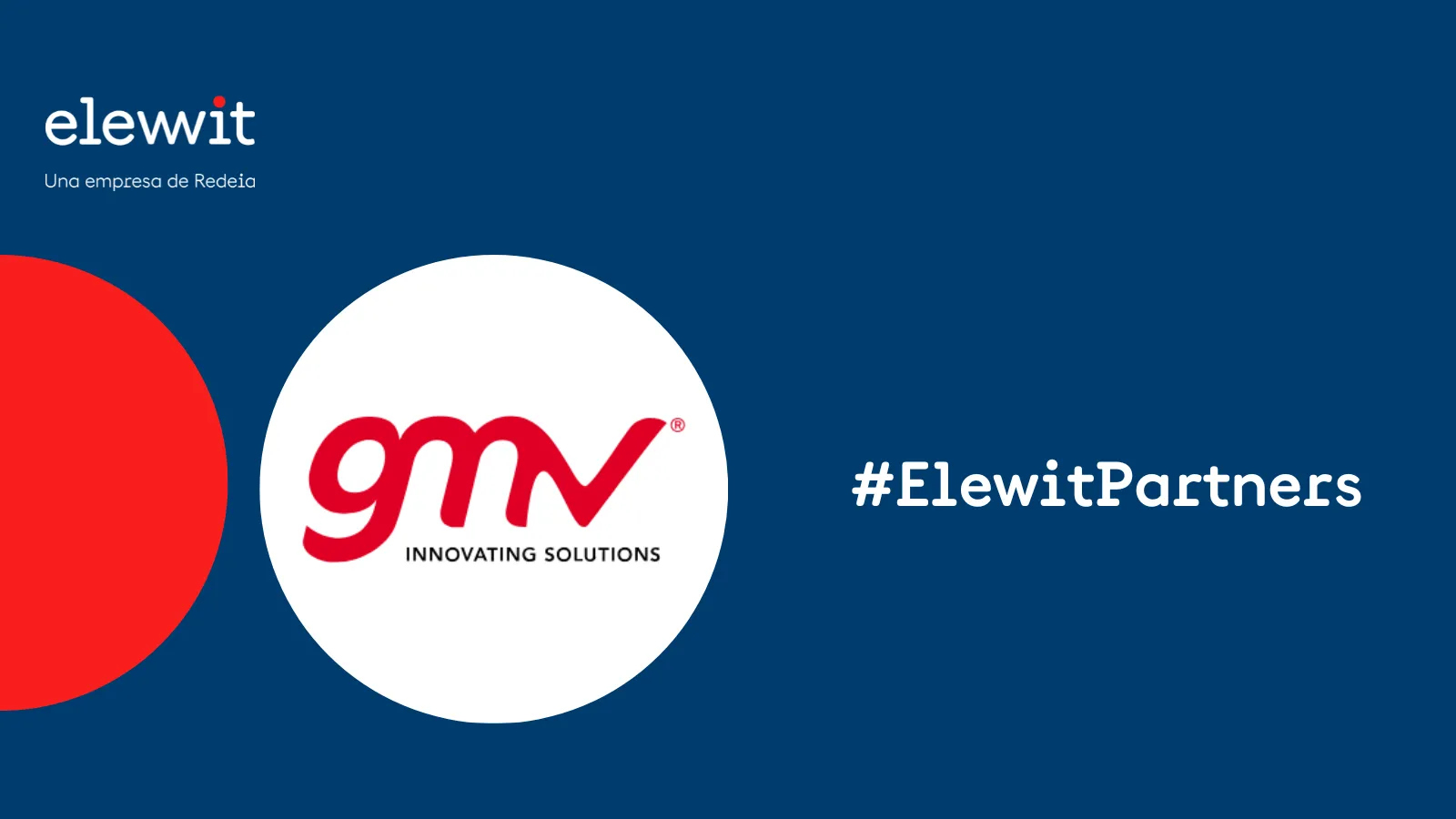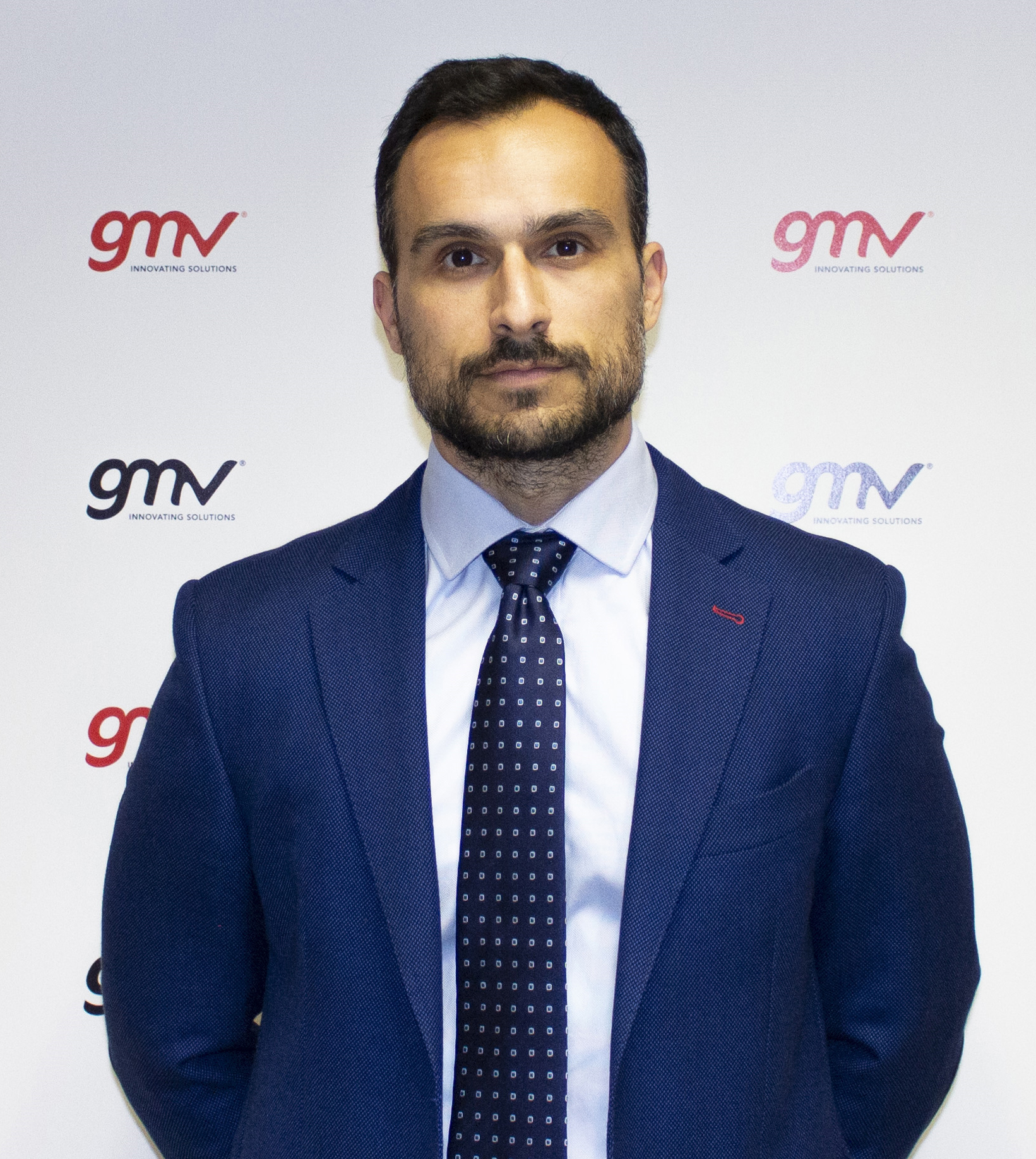
In a world in constant transformation, in which innovation and technology drive efficiency and sustainability, collaborations and strategic alliances are becoming a key pillar for success. In this context, we are very excited to introduce you to our new partner and member of Elewit's ecosystem, we are referring to the Spanish multinational GMV, whose expertise in robotics, artificial intelligence and monitoring systems is making a significant difference in critical asset management and energy transition.
Ángel C. Lázaro Ríos, Head of Robotics and Automation of GMV's Industry Sector, explains his company's vision and commitment to technological innovation and the creation of a more efficient and connected future.
Thanks to our joint collaboration in the ASUMO project, we have started testing your proposals in terms of new maintenance methodologies for facilities containing critical assets, what emerging technologies do you think will be key for this task?
From our perspective, robotics, particularly autonomous robotics in conjunction with artificial intelligence, will play a key role at improving safety, productivity and efficiency in the maintenance of facilities which contain critical assets. This technology offers significant advantages, as it optimizes the maintenance process and enables higher sampling frequency, which reduces the intervals between inspections.
The inherent efficiency of autonomous robots, which operate uninterruptedly on potentially repetitive tasks, not only minimizes risks to workers, but also ensures accurate and consistent execution of tasks. In addition, the ability to access areas that are difficult for humans to reach and the ability to collect real-time data enables the implementation of predictive maintenance strategies, resulting in optimal resource allocation and an extension of the service life of these facilities.
1. What difficulties and problems do your designs and solutions solve? What advantages do they have over other companies in the sector?
The technology used in this project is based on the integration of our uPathWay solution, which allows mobile robots to operate autonomously, linked to a quadruped robot specially manufactured for critical asset inspection tasks. The main problem solved is the difficulty of start-up and operation of the equipment, as well as the possibility of managing a fleet of heterogeneous vehicles controlled in a homogeneous way from a single point. In general, our approach offers the main advantages:
- Precise location system: Allows centimeter-accurate vehicle location based on the Global Navigation Satellite System (GNSS), eliminating the need for prior mapping and deployment of RTK antennas, and speeding up the boot up.
- Comprehensive management interface: Provides an easy-to-use web interface to manage robots, missions, routes, alarms and reports, centralizing the management of the fleet of vehicles and facilities.
- Compatibilidad y flexibilidad: It offers a cross-platform solution with guaranteed interoperability, using ROS (Robot Operating System) as the control standard and allowing integration with a wide range of robot manufacturers.
- Optimization: Offers dynamic routing to avoid obstacles and adapt to changing environments, plus the ability to add an advanced scheduler to optimize the fleet according to movement needs and vehicle characteristics.
- Integration: It provides an API for integration with external systems, including a ModBus TCP module to interact with physical elements of the environment and manage content-based information.
These characteristics set us apart in the industry by providing innovative, accurate, flexible and highly integrated solutions that significantly improve the efficiency and effectiveness of critical asset management in diverse environments.
2. What technologies do you usually work with?
GMV is known for adopting a broad spectrum of cutting-edge technologies to design a more efficient, intelligent and sustainable industrial future. From state-of-the-art automation and control systems to advanced robotics solutions and real-time monitoring systems, we fully embrace the Industrial Internet of Things (IIoT) revolution to optimize processes and facilitate effective predictive maintenance. The integration of artificial intelligence and machine learning powers our ability to perform predictive analytics, make data-driven decisions and optimize supply chain management.
In addition, cybersecurity is a fundamental component of our business, ensuring the integrity and protection of each project, which reinforces our customers' confidence in the digital age. We are also exploring the possibilities of other disruptive technologies such as quantum computing, a technology that promises to revolutionize our data processing and analysis methods to unprecedented levels.
3. What are your current projects, which of them is the most important?
We are currently working on several robotics projects ranging from collaborative to autonomous robotics in different fields of application, such as last mile delivery or automation of road maintenance operations. We have recently been awarded for a process automation project in the recovery of samples in the laboratory that we have implemented in Cepsa. A success story that reinforces employee safety and boosts efficiency and productivity improvements, while helping to promote production processes based on circular economy techniques, by automating the recovery of samples and recycling of containers.
We are also working with BMW as a supplier of the next generation of safe and precise positioning technology for the automated driving of its autonomous vehicles.
4. What could be your most innovative solution in the next few years?
Our most innovative solution in the industrial sector for the future is uPathWay. This solution represents a unique combination of GNSS-based location accuracy applied to robotics with efficient dynamic routing capabilities. Its ability to implement outdoor circulation systems for vehicles to move autonomously in complex environments without requiring costly RTK antenna deployments sets it apart from other solutions, pre-mapping or the need for expensive LIDAR equipment.
Its most significant feature is its adaptability to constantly changing environments and its ability to optimize vehicle fleets in real time. We firmly believe that these features position uPathWay as a leading and highly promising solution for the future of facility maintenance in the industrial sector.
5. How does your technology contribute to the energy transition and achieving universal and inclusive connectivity?
Our technology plays a key role at promoting energy transition and achieving universal and inclusive connectivity. In the field of energy transition, uPathWay optimizes efficiency in the inspection and maintenance of critical asset facilities, reducing carbon footprint associated with traveling between locations and enabling more effective management of critical asset infrastructures. This efficiency proves to be an essential component for the adoption of renewable energy and effective resource management.
In addition, by removing barriers and reducing costs in the implementation of positioning and robotics technologies, we contribute to greater accessibility and democratization of connectivity. The flexibility and interoperability of uPathWay ensures that diverse stakeholders can adopt and apply it in different contexts, fostering inclusive connectivity that spans both urban and rural areas, promoting equity in access to advanced technologies.
The demand for technological solutions for clean energy generation and efficient management of energy infrastructure is constantly growing.
The demand for technology solutions for clean energy generation and efficient energy infrastructure management is constantly growing. Moreover, this transformation aligns with the commitment of technology companies to social and environmental responsibility by contributing to the reduction of carbon emissions and addressing the challenges of climate change.
6. Looking ahead, what can we expect from GMV in 2030?
It is a challenge to make long-term projections in such a dynamic technological environment, we expect that by 2030 our critical asset monitoring technology will be considered a key element in critical asset management by Red Eléctrica and Elewit. We envision a scenario in which our solution is present in most of the critical assets they manage, playing a central role in their preventive maintenance strategies.
Overall, we will continue to invest in research and development, as well as a strong commitment to remain at the forefront of technological innovation. We are committed to evolving and adapting to changing market needs and to providing cutting-edge solutions that not only meet, but exceed our customers' expectations, enabling them to maintain efficient and safe operations well into the future.
7. How was your experience working with Elewit?
Our experience with Elewit is tremendously positive. Although we are in the early stages of the project, we have witnessed a highly collaborative approach that has led us to truly feel like integral members of the team leading this initiative. We see ourselves as a key part of a highly complex and notoriously innovative project, and we are excited by the challenge we face. This passion and motivation inspire us to give our best, as the trust that both Elewit and Red Eléctrica have placed in us drives us to deliver exceptional results in the future.
8. In recent years we have witnessed a transformation of the energy model; what is GMV’s perspective on this transformation?
In GMV we take this transformation as an opportunity to develop advanced technologies that promote sustainability and efficiency in energy generation and distribution. Examples of key technologies to consider include advanced energy storage systems, digitization of the power grid with sensors and smart meters, and artificial intelligence solutions for demand-side management.
The demand for technology solutions for clean energy generation and efficient energy infrastructure management is constantly growing. Moreover, this transformation aligns with the commitment of technology companies to social and environmental responsibility by contributing to the reduction of carbon emissions and addressing the challenges of climate change.
In short, the transformation of the energy model represents an exciting opportunity to apply technological innovation for building a more sustainable and efficient energy future.

Ángel C. Lázaro Ríos
Head of Robotics and Automation of GMV's Industry Sector